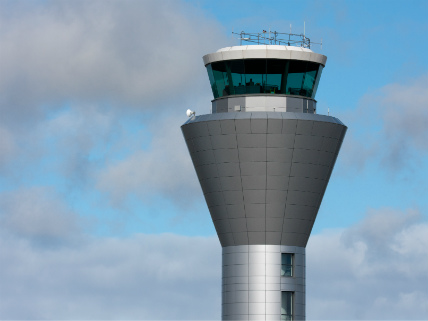Trump Proposes Major Overhaul of Outdated U.S. Air Traffic Control System
 President Trump, in a speech Monday, promised to replace the current government-owned and operated air traffic control system with a private “self-financing, non-profit organization” relying on user fees, not taxes, to fund itself.
President Trump, in a speech Monday, promised to replace the current government-owned and operated air traffic control system with a private “self-financing, non-profit organization” relying on user fees, not taxes, to fund itself.
The idea is not new. Canada, the U.K. and Germany are among the roughly 50 countries that privatized air traffic control.
It has been a long-fought goal of libertarians like Bob Poole, senior transportation analyst for the Reason Foundation (the non-profit that publishes this website). Poole has argued since the 1970’s the “high-tech 24/7 service business” that is air traffic control “is a poor fit for a tax-funded bureaucracy housed within a safety regulatory agency.”
Poole proposed what Trump is now embracing, dumping the Federal Aviation Administration-run system with a non-profit air traffic control entity less bureaucratic, more cost-effective, and ultimately more responsive to consumer needs.
As a 2016 Office of the Inspector General (OIG) report found, the FAA has done a pretty terrible job managing and modernizing a system upon which some two million air travelers every day rely.
Despite repeated attempts by Congress to reform the FAA’s management, personnel, and organizational practices, its “costs continue to rise while operational productivity has declined,” the report concluded.
The FAA’s budget had increased 95 percent, from $8.1 billion to $15.9 billion from 1996 to 2012 while maintaining the same number of air traffic control facilities . Personnel costs also doubled from $3.7 billion to $7.3 billion over the same time period while the number of overall FAA personnel declined by four percent.
The OIG puts the blame squarely on the agency, saying bluntly the “FAA’s disappointing reform outcomes are largely the result of the Agency’s failure to take full advantage of its authorities when implementing new personnel systems, and not using business-like practices to improve its operational efficiency and cost effectiveness.”
This and organizational culture “resistant to change” produced spiralling costs and the sandbagging of many the tech modernization efforts the agency undertook. Of the fifteen major FAA systems upgrades examined in the report, eight were both behind schedule and over budget, costing taxpayers $3.8 billion in cost overruns, and delaying the average project by more than four years.
These results are in stark contrast to the performance of other nations’ far more commercialized air traffic control systems which Poole says have seen “safety either improved or remained the same; that costs were reduced and efficiency increased, and that investments were made in new technology. “
New Zealand, the first country to take the privatization route in the late 1980’s, saw its air traffic control system go from losing $5.5 million a year to turning a $2.3 million profit in just a year after privatization.
A recent Department of Transportation (DOT) study looking at the commercialized air traffic control systems of Canada, Germany, France and the U.K. found that all but France’s were self-funded.
Privatized systems have also proven nimbler at modernizing their air traffic control technology.
“In lieu of developing large and multi-year modernization systems and software,” commercialized European air traffic control systems instead adopted new technologies as they came on line, often modifying “commercial off-the-shelf products to meet their operational needs,” according to the DOT study.
This in contrast with the FAA’s slow and unwieldly procurement process to modernize its systems which, according to one analyst, “virtually ensures that any planned “new” technology will be obsolete by the time it is operational.”
So while Canada and the U.K. are rapidly moving toward satellite guidance and high-altitude digital communications, the U.S. is stuck with mid-century ground radar and radio commands.
Given the FAA’s performance—considered poor by even the government’s standard—and the success of alternative models worldwide, one would think this kind of reform plan would be an easy sell.
Reform is not a sure thing.
Rep. Bill Shuster (R–Penn.), head of the House Transportation Committee, last year introduced a bill very similar to Trump’s proposal. The bill failed to make it to the floor of the Republican-controlled House for a vote.
But with the president’s endoresement, the support of former FAA administrators, the Airline Pilots Association International and, potentially, the National Air Traffic Controllers Association on board, the long fought for goal of air traffic control privatization might just get off the ground.